Those who like tomatoes, planting and caring for them in a greenhouse have long been familiar with them. So you can provide yourself with tomatoes from early June to late autumn. But in order to please the harvest, you need to grow varieties designed specifically for greenhouses, and observe a number of agrotechnical requirements.
Material Content:
- 1 Tomatoes - fruitful greenhouse varieties
- 2 Preparing a greenhouse for tomatoes
- 3 Growing seedlings at home
- 4 Planting tomatoes in a polycarbonate greenhouse
- 5 Greenhouse care
- 6 The main problems associated with growing
- 7 Why do tomatoes crack in the greenhouse?
- 8 Diseases, pests and methods of dealing with them
- 9 How to prepare a greenhouse for winter after tomatoes?
Tomatoes - fruitful greenhouse varieties
When buying seeds, it is worth giving preference to hybrid varieties. They are resistant to major diseases, tolerate greenhouse conditions and invariably provide a rich harvest. Pay attention to the letter F on the package.

The following varieties of tomatoes for polycarbonate greenhouses are especially popular with experienced gardeners:
- Samara F1 is an early crop variety, resistant to most diseases, fruiting is plentiful, tomatoes are red, do not crack.
- De Barao is a variety that many gardeners prefer. Thick tomatoes are great for canning. There are different colors - red, yellow, orange, even black.
- Bull's heart - despite the fact that the variety does not differ in abundant fruiting, it is appreciated for its exceptional taste. Large tomatoes, sugar on the break, perfect for salads.
- Miracle of the Earth - ripens early, but tolerates drought pretty well. The fruits are large, especially good when consumed fresh.
- Pink honey is a universal variety, tomatoes can be grown both in a greenhouse and in open ground. The plant is tall, needs to be tied up, the fruits are pink in color, tasty in salads.As you can guess from the name - the taste is sweetish.
- Kira F1 - a hybrid, orange tomatoes, ripens the crop early, fruiting is friendly.
- Caspar F1 - gardeners have already rated this variety. Red tomatoes, reminiscent of peppers in shape, have a great taste, suitable for salads and for canning. The hybrid is resistant to most diseases.
When choosing early-ripening, mid-ripening and late tomato varieties for planting in a greenhouse, you need to take into account the area of the site. In addition, the size of the greenhouse will influence the choice of varieties. Tall green varieties are not suitable for a small greenhouse. If the greenhouse is tall and large, then low tomatoes are planted around the perimeter, and tall in the center.
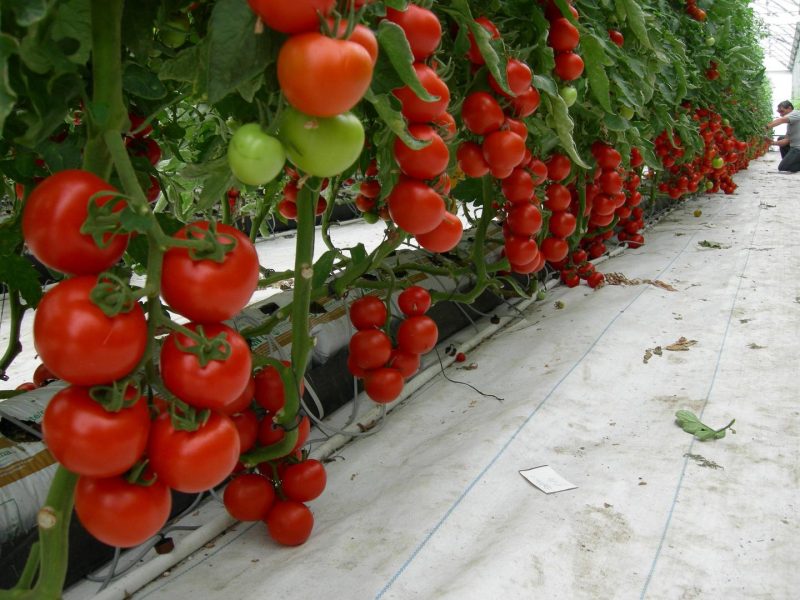
Greenhouses are characterized by warm and humid air, so various bacteria can develop here. Varieties of tomatoes need to be selected that are resistant to disease, and well tolerating moist soil.
Crop varieties of tomatoes are a guarantee that the work associated with cultivation will not be in vain.
Preparing a greenhouse for tomatoes
If the greenhouse has already been used, in autumn you need to remove the remains of old plants and weeds from it, and then dig the soil.
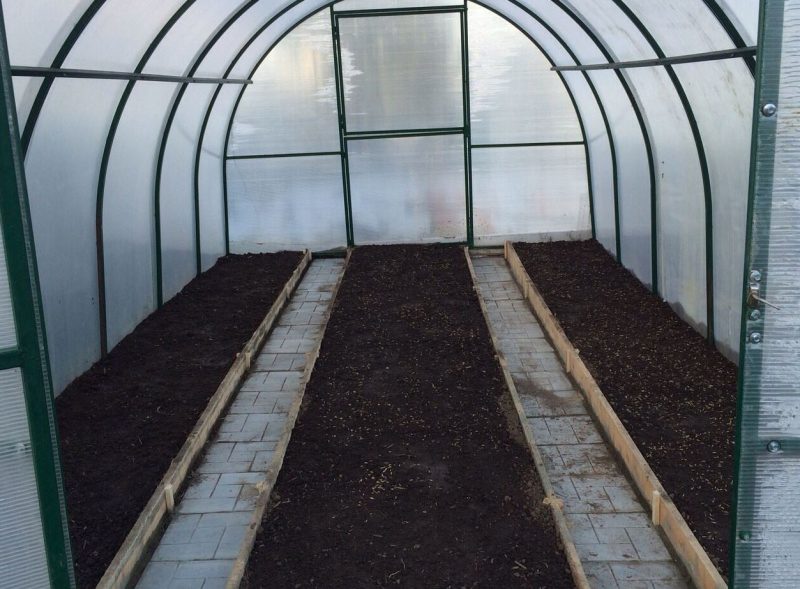
In spring, the earth is loosened, ash is added. Nitrogen plays an important role in the proper development of tomatoes. Saturate the soil with manure. Planting siderat plants such as phacelia, mustard or peas also has a good effect.
The most serious danger to tomatoes is late blight. So that the seedlings do not get sick, the soil can be treated with one of the appropriate preparations purchased in the store, or with this solution: 3 kg of hydrated lime and 500 g of copper sulfate are diluted in 10 l of water.
Before planting seedlings, the earth is shed with a solution of potassium permanganate.
Growing seedlings at home
Experienced gardeners begin to plant seeds in the first decade of March. If you use seeds from your tomatoes, they need to be immersed in a warm solution of pink potassium permanganate. It is advisable to use only those seeds that have sunk to the bottom of the tank for 10 minutes.
Then the seeds are washed and kept wrapped in a damp cloth for several days. As soon as the sprouts begin to appear, the seeds are "hardened": 2-3 times placed in the refrigerator for 12 hours.
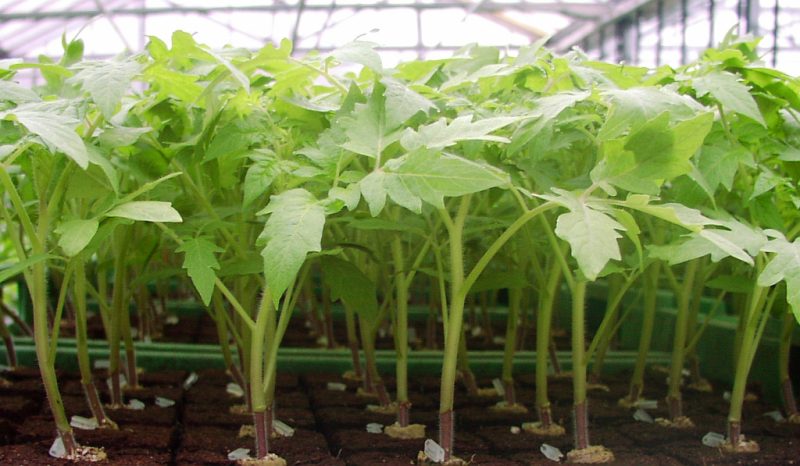
Seeds purchased at the store do not need to be disinfected with potassium permanganate, but hardening is very useful for them.
The best option is to use purchased ready-made soil. But for those summer residents who grow a large number of seedlings, such a purchase can be too expensive. In this case, they use the land from their site, which has been harvested since the fall - they add ash, compost to it, and watered with potassium permanganate.
Seeds are planted in boxes with prepared soil or in separate cups, and cardboard bags made from juice or milk can also be used. If the seedlings will not stand on a sunny window, you will have to use fluorescent lamps.
After planting the seeds, the boxes are closed with glass or a transparent film. Shoots should appear within a week.
Water the seedlings as needed, feed them with complex fertilizers after the appearance of the first true leaves.
If tomatoes are planted in a common box, then after the appearance of these leaves they are dived, planted in separate cups. 2 weeks after the picking, they are fed a second time.
Planting tomatoes in a polycarbonate greenhouse
Planting tomatoes in a greenhouse is better in the late afternoon, so that they do not immediately appear in the bright sun. The distance between plants should be at least 30 cm.
Hardened tomatoes will be better transplanted - if before that they were taken out onto the street for several hours daily.
The time for planting seedlings depends on what kind of greenhouse. The heated room is ready to receive green residents in late April, unheated - from mid-May. The air temperature inside the greenhouse should be around +25 C. After planting, tomatoes are abundantly watered.
This is one of the most critical stages in growing tomatoes.
Greenhouse care
First of all, it is watering. It should be done once every 3-4 days. If there are a lot of tomatoes, it is more convenient to use an automatic system. Ideally, drip irrigation. But pouring water from a hose is undesirable. Chlorinated water that has not settled down is not very useful for plants, and a hose stream will break the ground around the tomatoes.
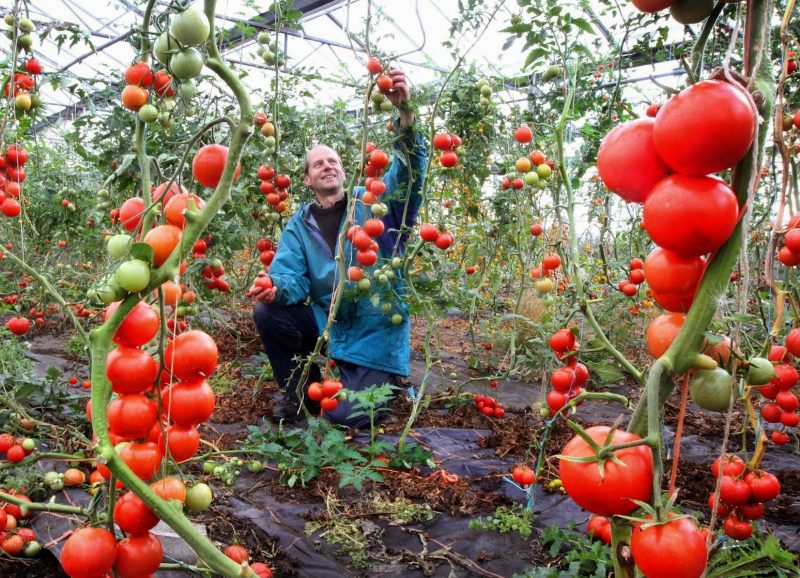
When growing a small amount of tomatoes, it will be convenient to use a watering can with settled water.
You need to pour water under the root, if the drops hit the leaves - they can then be burned by sunlight.
Fertilizer after transplanting seedlings make twice. The first time the young tomatoes started in a new place, the second time the ovary appeared.
Ammonia and calcium nitrate can be used. Or buy fertilizer in liquid form, dilute it in water, and water the plants.
As the tomatoes grow, you need to trim the lower leaves, but proceed with caution so as not to damage the stem, and also, if necessary, to pinch. With proper pruning, the crop will be larger, as the nutrients will get the ovaries.
Tomatoes are also tied to supports to provide plants with the best conditions for development.
The main problems associated with growing
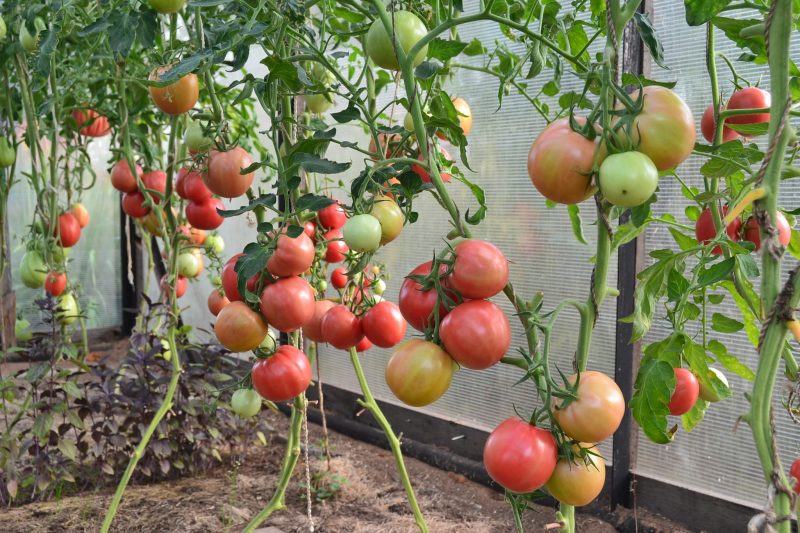
What are the main problems when growing tomatoes in a greenhouse can a summer resident encounter?
1. Tomatoes bloom, but there is no ovary. This is the so-called fatliquoring. Tomatoes delight in appearance - strong stems, leaves of saturated color, but the flower brush is weak. The reason is an overabundance of fertilizers, such as nitrogen fertilizing. How can this be dealt with?
- Wash nitrogen with plenty of watering (8-10 liters under the bush);
- Carry out potash dressing using potassium sulfate (1.5-2 g per plant).
2. Tomatoes begin to shed leaves and fruits. This suggests that they lack moisture - they need to be watered more often and more abundantly.
In order for the tomatoes in the greenhouse to give a generous harvest, the combination of the three basic conditions for proper growth - lighting, moistening and top dressing - must be optimal and timely.
Why do tomatoes crack in the greenhouse?
This is a fairly common problem for greenhouse tomatoes. Dense and yellow tomatoes crack especially often. For some varieties, this feature is genetically determined.
This is a peculiar reaction of plants, which can be associated with overheating of the soil, or heavy watering after the tomatoes have experienced drought, as well as with a lack of trace elements.
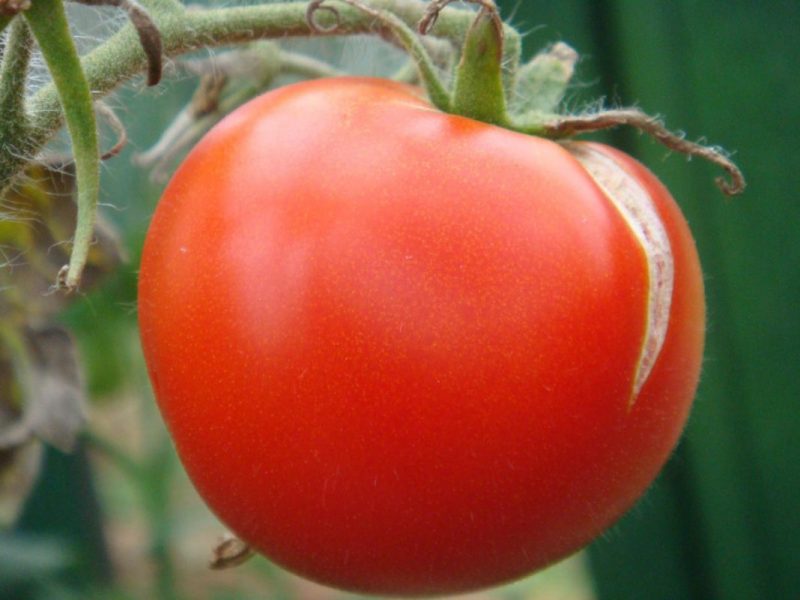
What to do?
- Maintain air humidity. In the greenhouse, it should be - 50% and above.
- Carry out regular and uniform watering.
- Apply soil mulching.
- Ventilate the greenhouse.
- Shade the area from the scorching sun with agrofibre.
Diseases, pests and methods of dealing with them
It would seem - tomatoes in greenhouse conditions should not hurt. However, the diseases characteristic of this vegetable affect tomatoes, both growing in the open ground and in the greenhouse.
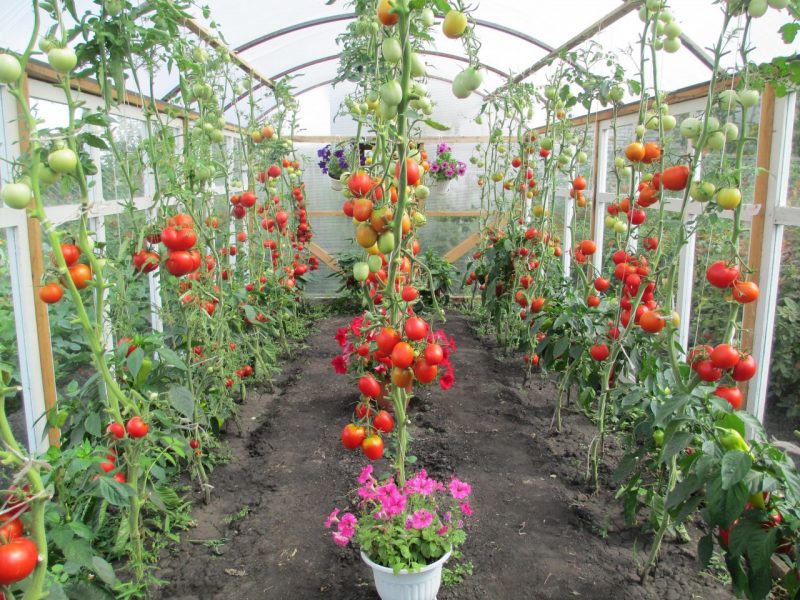
Powdery Mildew Tomatoes are sprayed with a solution of copper sulfate. Damaged leaves are broken off and burned. Complex fertilizers with a high content of phosphorus and potassium are additionally added to the soil. Good spraying infusion of cow manure helps.
Harder to get rid of phytophthora. You will have to turn to special drugs, such as Fitosporin. The affected leaves are cut off, the tomatoes are sprayed with iodine solution (10 ml per bucket of water), this procedure is repeated twice, with an interval of 3 days.
It is interesting:Tomatoes: planting and care
To avoid vertebral rot plants need to be fed with calcium. To do this, make an infusion of egg shells, watering them under the root still in the seedling stage.
Strong chemicals in the greenhouse are undesirable to subsequently produce environmentally friendly fruits.
How to prepare a greenhouse for winter after tomatoes?
When the last harvest is harvested, the greenhouses are prepared for winter. First of all, the remains of plants are removed. If late blight wintered in the greenhouse, then next season it will hit young plants.
It is recommended to remove the film coating so that it does not tear during the winter. The film is treated with a solution of copper sulfate, then dried and removed until the next season. In this case, the ground in the greenhouse is covered with snow, and in the spring it is saturated with melt water, which is very useful for plants.
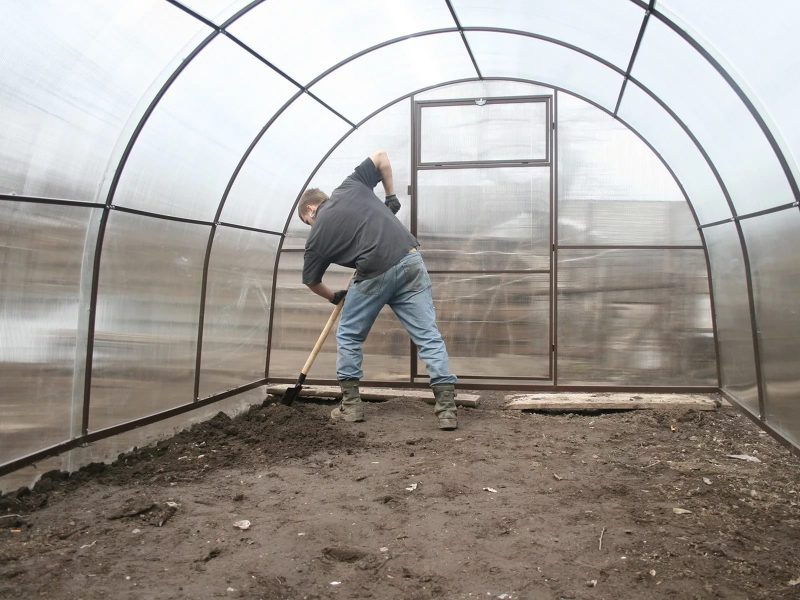
The glass greenhouse is washed with soapy water, adding potassium permanganate. Particular attention is paid to places where dirt accumulates (and, therefore, bacteria). Damaged glasses are replaced, cracks for the winter are covered with putty.
A polycarbonate greenhouse can be washed inside with water and soda, or you can use a dishwashing detergent. It is best to take soft sponges or rags for cleaning.
Wooden supports are treated with a solution of copper sulfate.
During the winter, snow is thrown into a greenhouse made of polycarbonate or glass.

They dig the soil inside the greenhouse, but lumps of earth are left intact - this is a guarantee of the death of pests during cold weather. You can do the opposite: spill the earth with boiling water and cover with a film.
An excellent means of disinfection is the use of sulfur drafts. They allow you to get rid of mold, fungi, even in severe cases, when the wooden supports turn black, various types of infections in all corners of the greenhouse. Checkers are placed on a metal sheet and set on fire.
It is also useful to add dolomite flour or lime to the soil. In addition to disinfecting properties, these substances are fertilizers.
When using the greenhouse for more than 5 years, it is recommended to replace the soil in it with fresh soil.
If the cottage is located in places characterized by heavy snowfall, several wooden or metal supports are installed in the greenhouses so that the heavy snow layer does not damage the structure.
With proper use, the greenhouse will serve for many years.












